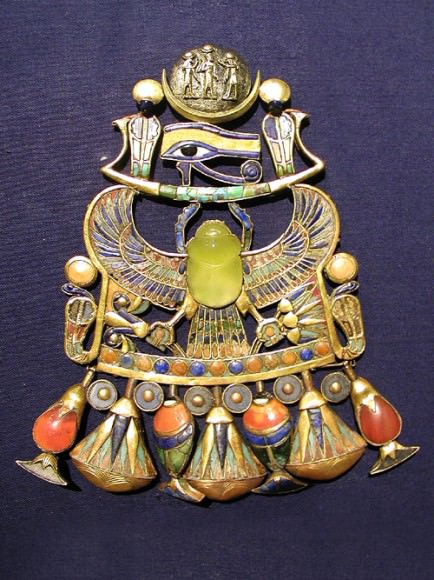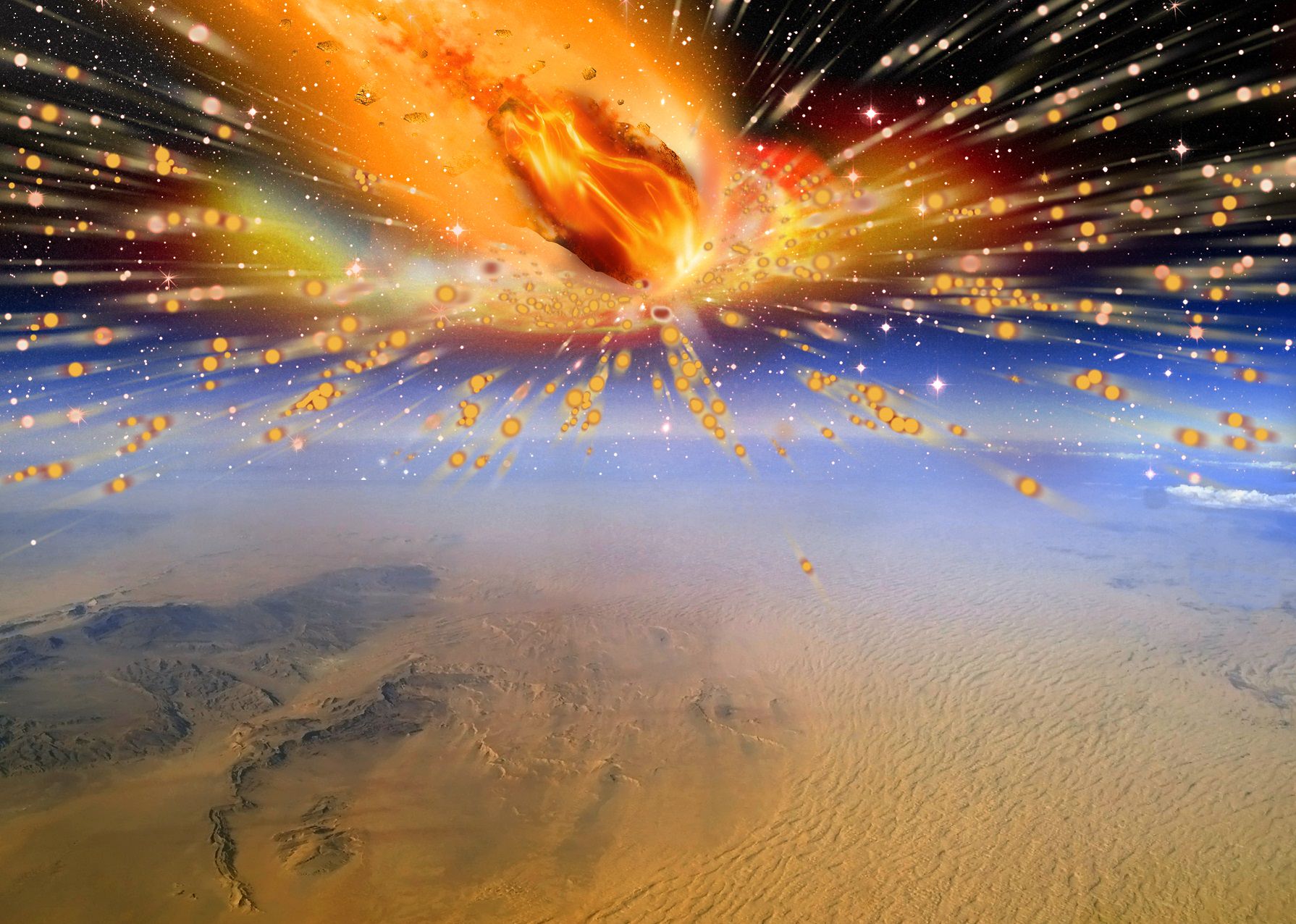Speak about destruction. A comet slammed into Earth’s atmosphere 28 million years ago and basically killed everything with fire below, leaving a huge deposit of yellow silica glass in its wake, a team of astronomers say.
The evidence — a black pebble found by an Egyptian geologist within this vast tract of glass — is believed to be a part of the comet’s nucleus or heart and not just an ordinary meteorite. The team says this could be the first hard evidence, so to speak, of a comet striking Earth.
The temporary “shockwave of fire” hit 2,300 square miles (roughly 6,000 square kilometers) of Egyptian sand, turning the grains into glass. Given the area’s rich archaeological history, it’s probably not too much of a surprise that a small portion of this is visible in a brooch that belonged to ancient boy-king Tutankhamun.

“It’s a typical scientific euphoria when you eliminate all other options and come to the realization of what it must be,” said lead author Jan Kramers of the University of Johannesburg in a statement.
Besides silica, the cosmic blast furnace left teeny-tiny diamonds in its wake, forming from carbon. “Normally they form deep in the earth, where the pressure is high, but you can also generate very high pressure with shock. Part of the comet impacted and the shock of the impact produced the diamonds,” said Kramers.
More information on this find should be available soon when the discovery is published in Earth and Planetary Science Letters. The authors first discussed their find in a public lecture Oct. 10. It will be interesting to see what other scientific teams think of this hypothesis, so stay tuned for the reaction.
Source: University of the Witwartersrand, Johannesburg


My Uncle Leo got a year old
Fiat by working part-time from a macbook air. this link Jam20.?om
Is it the yellow scarab beetle in the middle?
Yes it is – I have samples of what is also called Libyan Desert Glass plus a number of associated papers.
Roseland Observatory.
Smoking gun, eh? This glass is found in the Libyan desert. I wonder if there is a possible link to the Pleistocene glass found in the Australian desert? Has a similar date attributed to it….
Oligocene and Pliocene age is not similar. There is 28 millions of years between…
Right you are! I seem to have lost a zero somewhere’s… The Pleistocene lasted from about 2,588,000 to 11,700 years ago… whereas this impact, as stated above, was 28,000,000 years ago. Still, considering cometary orbitals and their tendency for repetitive swings past Sol.. there is a REMOTE possibility that these events were somehow related? I’ll be sure to do more thorough fact checking in future!
Has anybody given this comet a name?